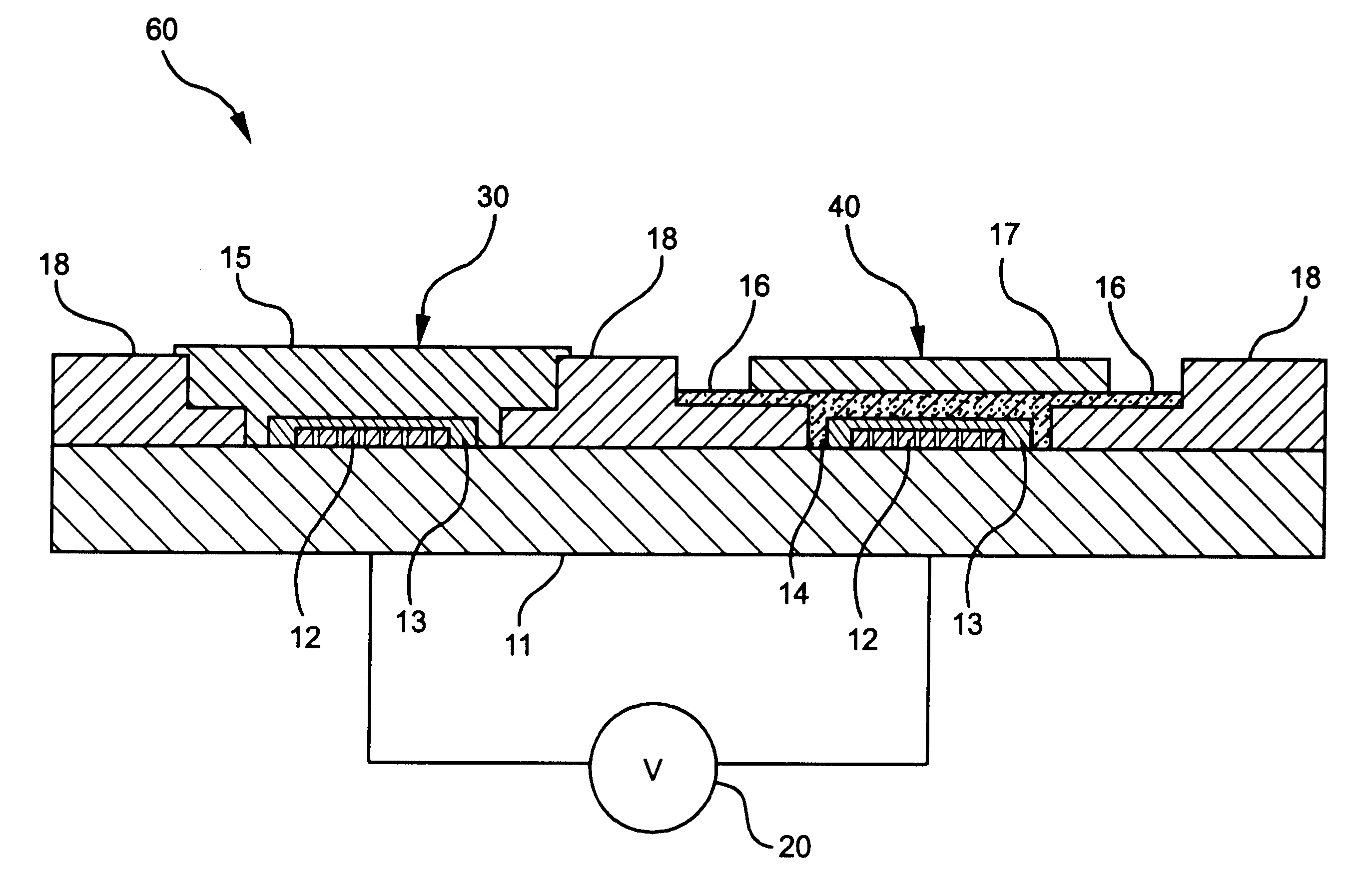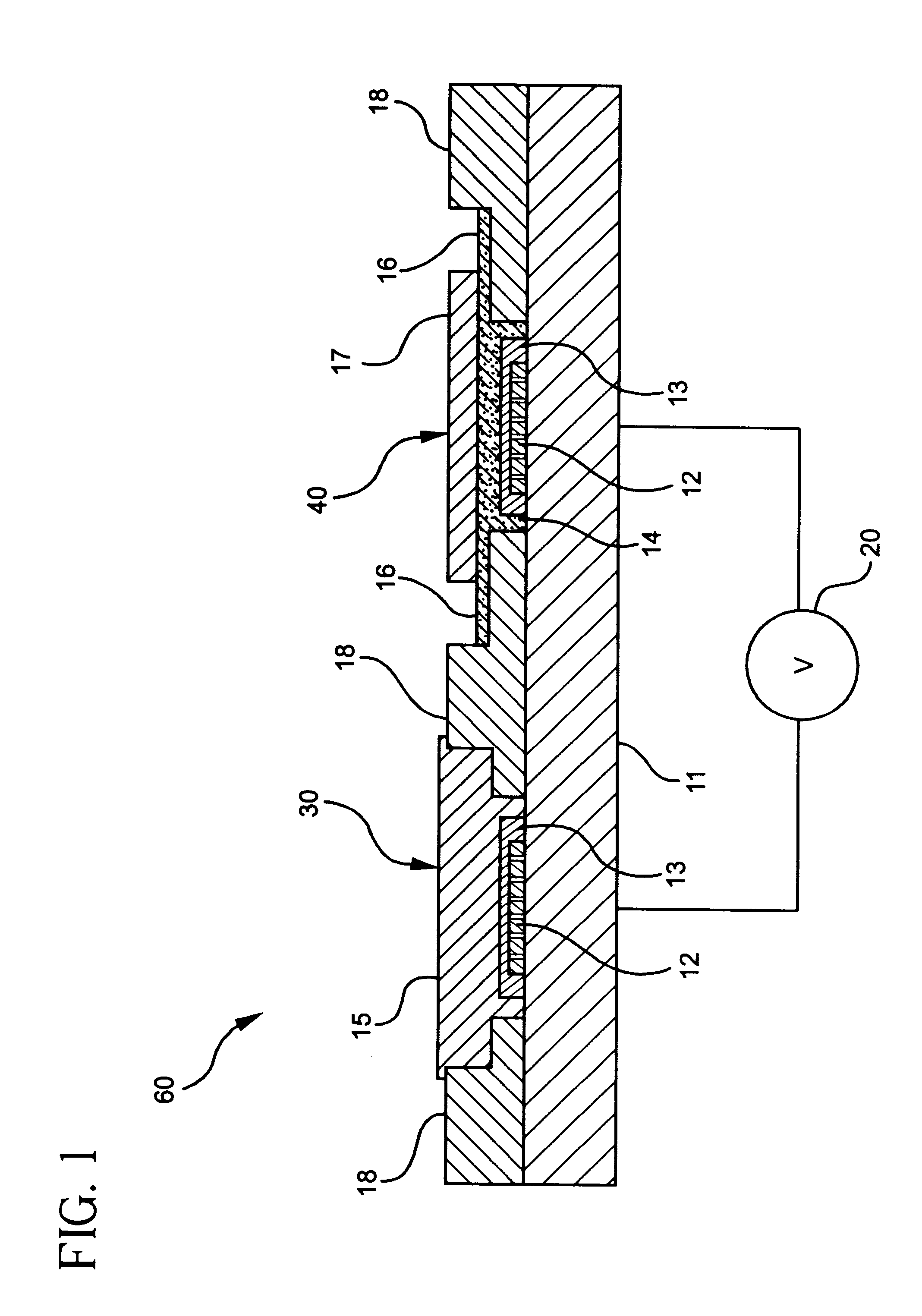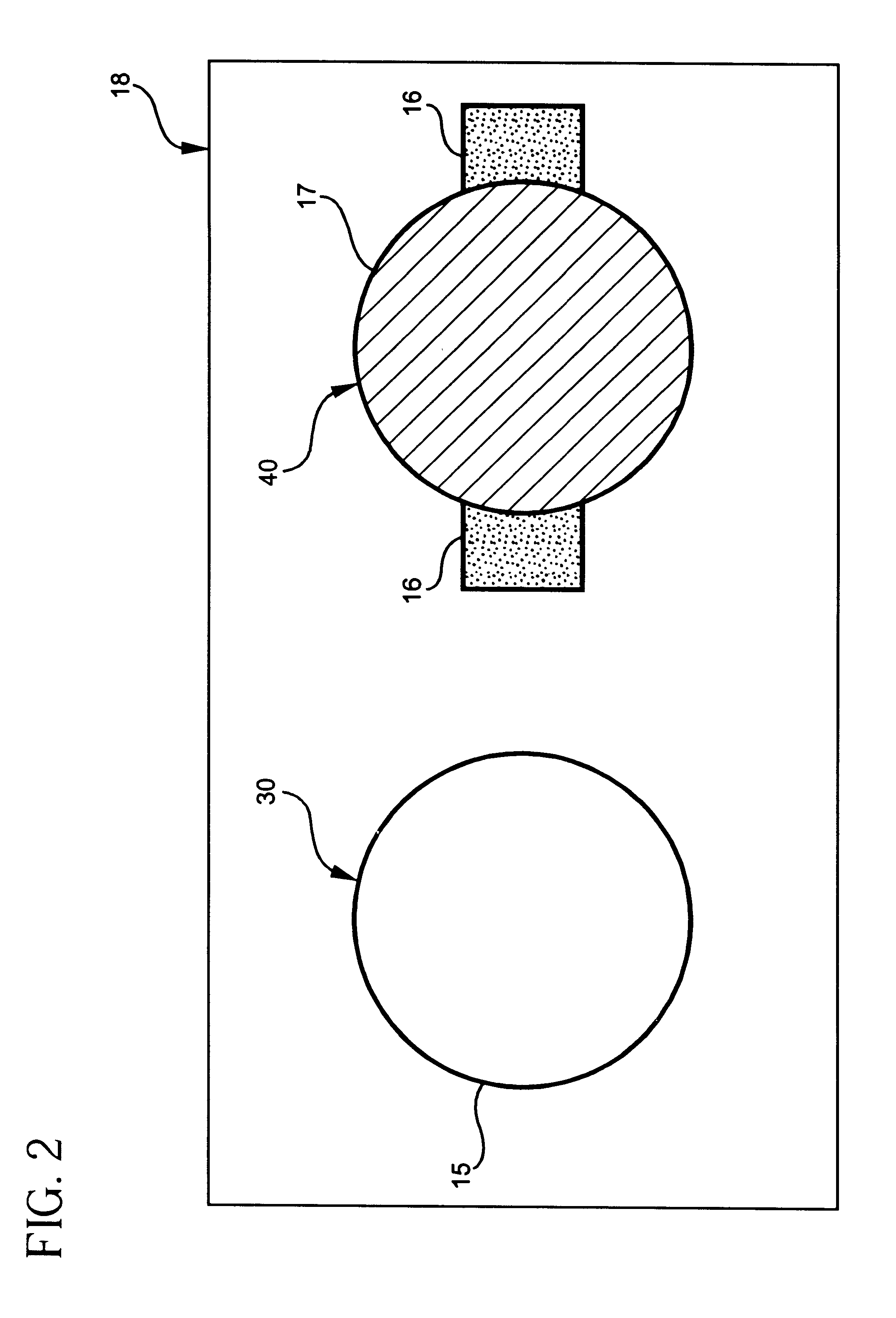Miniaturized solid-state reference electrode with self-diagnostic function
a reference electrode and self-diagnostic technology, applied in the field of miniaturized solid-state reference electrodes with self-diagnostic functions, can solve the problems of large obstructive factor, the inability to miniaturize and manufacture on a large scale, and the high production cost of conventional reference electrodes
- Summary
- Abstract
- Description
- Claims
- Application Information
AI Technical Summary
Problems solved by technology
Method used
Image
Examples
example 1
Construction of Potentiometric Electrode System with Self-Diagnosis Function
A potentiometric bi-electrode system of the present invention was constructed as follows.
Polyvinylpyrrolidone was dissolved at an amount of 6 wt % in an aqueous 2M KCl solution to prepare an inner reference solution,
In 1 ml of tetrahydrofuran, polyurethane was dissolved at an amount of 33 wt %, along with 1 wt % of valinomycin as a potassium ion-selective material and 66 wt % of bis(2-ethylhexyl) adipate as a plasticizer, to give an ion-selective, protective membrane.
A potassium ion-selective electrode membrane in the working electrode was prepared as the above ion-sensitive, protective membrane comprising the potassium ion-selective material.
The reference electrode thus prepared was measured or electrochemical properties, together with a conventional reference electrode.
example 2
Operational Features of Abnormality According to Junction Contamination of Reference Electrode
With reference to FIG. 4, the operational features of the potentiometric electrode system of the present invention are shown by the reference electrode when the junction is not contaminated (a), by the reference electrode when the junction is contaminated (b), and by the working electrode provided with a potassium ion-selective electrode membrane (c). As shown in this potentiometric graph, when the junction is not contaminated, the reference electrode keeps its potential irrespective of the concentration change of potassium chloride. In contrast, junction contamination makes the reference electrode react with potassium ion in accordance with the concentration change of potassium chloride, exhibiting a similar feature to the reactivity of the working electrode provided with the potassium ion-selective electrode membrane. Thus, the electrode system into which the reference electrode of such a...
example 3
Activation Time of Reference Electrode According to Junction Area
With reference to FIG. 5, the activation times of reference electrodes are compared between when a single junction (a) is formed and when a double junction (b) is formed. As shown in tho graph, it takes about 165 sec for the electrode with a single junction (a) to be activated, while the reference junction with a double junction needs only 75 sec for its activation, which is twice as fast as the activation of the reference electrode of the relatively small junction area. The activation time was determined as the time period it took to firstly meet a potential flow of 0.2 mV or less per min required for clinical examination.
PUM
 Login to View More
Login to View More Abstract
Description
Claims
Application Information
 Login to View More
Login to View More - R&D
- Intellectual Property
- Life Sciences
- Materials
- Tech Scout
- Unparalleled Data Quality
- Higher Quality Content
- 60% Fewer Hallucinations
Browse by: Latest US Patents, China's latest patents, Technical Efficacy Thesaurus, Application Domain, Technology Topic, Popular Technical Reports.
© 2025 PatSnap. All rights reserved.Legal|Privacy policy|Modern Slavery Act Transparency Statement|Sitemap|About US| Contact US: help@patsnap.com



